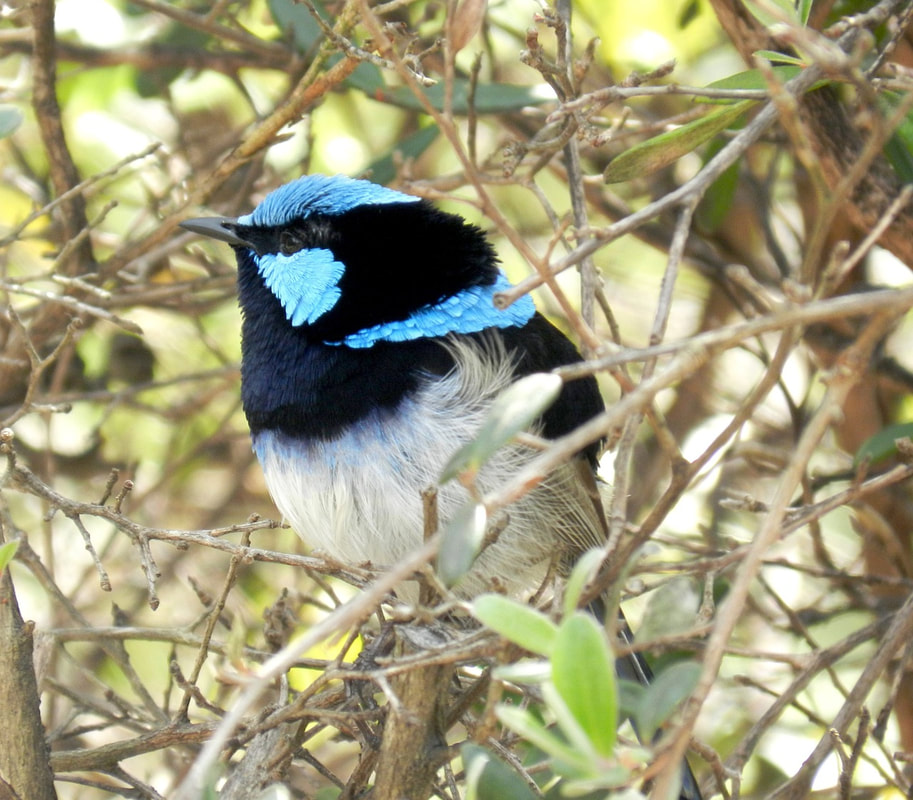Birds give us pleasure, but research has shown they are vital to the health and productivity of farms. Native birds consume large numbers of leaf-eating insects and pasture grubs, and are also important for the pollination of many plants. Birds are good indicators of the health of native ecosystems. A farm that has a rich diversity of native birds will have a diversity of other native wildlife such as mammals, reptiles and amphibians, all of which have important functions in landscape health.
To maintain diversity of bird species on the farm, maintain any remnant vegetation as it will provide structure and habitat for birds . Structure is the most important component for birds. Structure of native vegetation includes a full suite of plants including grasses, herbs, shrubs and trees. A mixture of native vegetation provides the structural complexity to provide places to forage, provide nest sites, and places to shelter. Seasonal variation in flowering and fruiting times ensures a continuous supply of food for some species.
Large old trees, dead or alive, provide birds with nest hollows and places to forage in the bark. Trees take 80-100 years to form hollows and are essentially irreplaceable. Many birds also require a vantage point to survey the landscape for potential predators, or a high perch from which to sing and attract a mate. Fencing around big live trees will prolong their life and may allow replacement seedlings to survive.
When leaf litter, fallen branches and logs are left, they break down slowly to release their bounty of nutrients. Hndreds of insect species feed on the fungi that speeds up the process. As most birds eat insects at some stage in their life, this organic material is essential to their health. Rocks provide shelter for insects and a warm spot on which skinks can bask.
Many birds use spider webs in the construction of their nests. Spiders are an important part of any ecosystem as some feed on seed eating insects that are responsible for poor germination. Small web-building spiders rely on the intricate architecture of fallen twigs and leaves in the understorey to build and maintain their snares. Wrens, pictured above, love to feed on spiders and are known to be particularly good at catching them.
To attract birds to your farm, remember large patches of native vegetation are more viable than small ones, and square blocks of vegetation are better than linear strips, to lessen the edge effect. Blocks of vegetation across the landscape provide stepping stones to ensure a safe passage for smaller birds. Rivers and streams are an important resource for both habitat, food and water, and if fenced from livestock will become a safe haven for birds.
To maintain diversity of bird species on the farm, maintain any remnant vegetation as it will provide structure and habitat for birds . Structure is the most important component for birds. Structure of native vegetation includes a full suite of plants including grasses, herbs, shrubs and trees. A mixture of native vegetation provides the structural complexity to provide places to forage, provide nest sites, and places to shelter. Seasonal variation in flowering and fruiting times ensures a continuous supply of food for some species.
Large old trees, dead or alive, provide birds with nest hollows and places to forage in the bark. Trees take 80-100 years to form hollows and are essentially irreplaceable. Many birds also require a vantage point to survey the landscape for potential predators, or a high perch from which to sing and attract a mate. Fencing around big live trees will prolong their life and may allow replacement seedlings to survive.
When leaf litter, fallen branches and logs are left, they break down slowly to release their bounty of nutrients. Hndreds of insect species feed on the fungi that speeds up the process. As most birds eat insects at some stage in their life, this organic material is essential to their health. Rocks provide shelter for insects and a warm spot on which skinks can bask.
Many birds use spider webs in the construction of their nests. Spiders are an important part of any ecosystem as some feed on seed eating insects that are responsible for poor germination. Small web-building spiders rely on the intricate architecture of fallen twigs and leaves in the understorey to build and maintain their snares. Wrens, pictured above, love to feed on spiders and are known to be particularly good at catching them.
To attract birds to your farm, remember large patches of native vegetation are more viable than small ones, and square blocks of vegetation are better than linear strips, to lessen the edge effect. Blocks of vegetation across the landscape provide stepping stones to ensure a safe passage for smaller birds. Rivers and streams are an important resource for both habitat, food and water, and if fenced from livestock will become a safe haven for birds.

 RSS Feed
RSS Feed